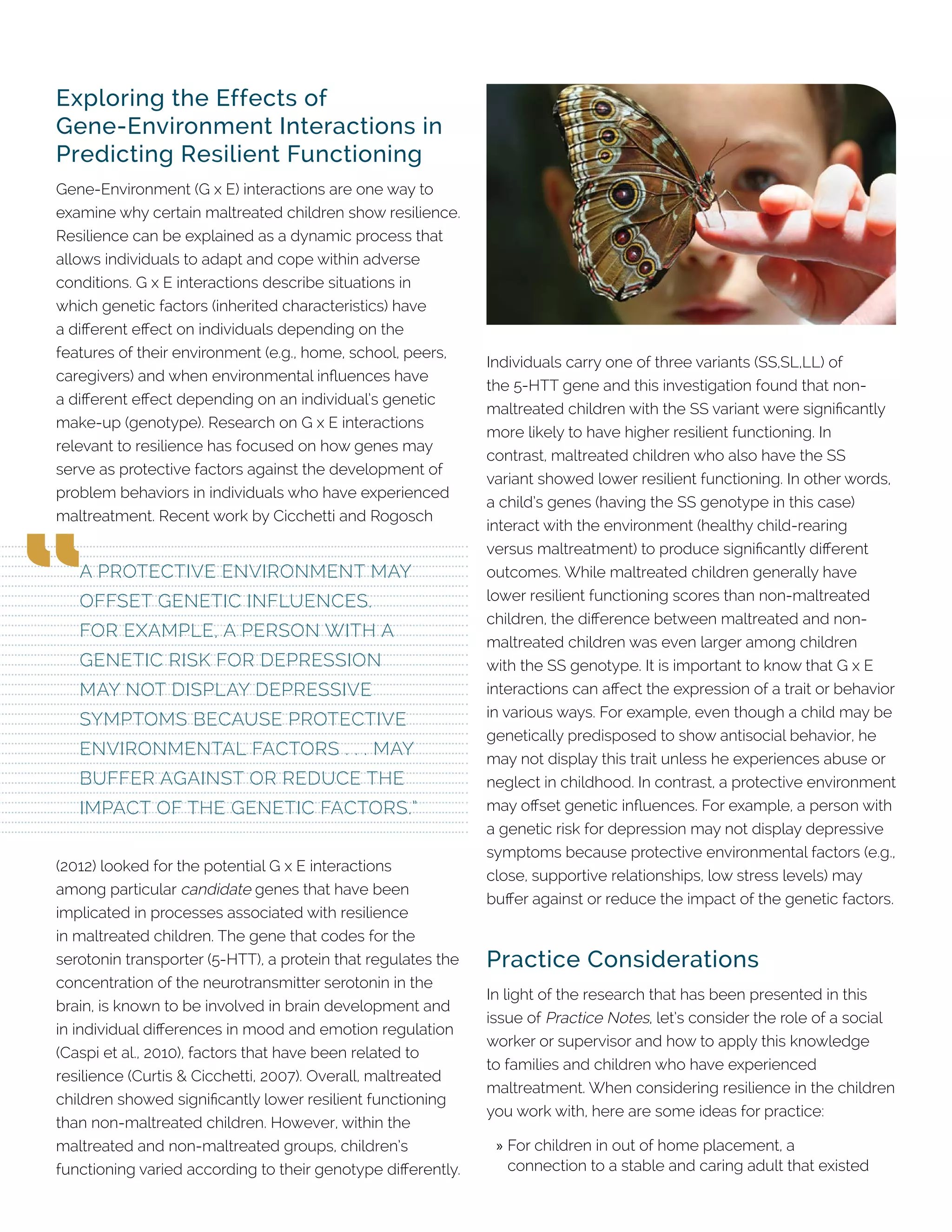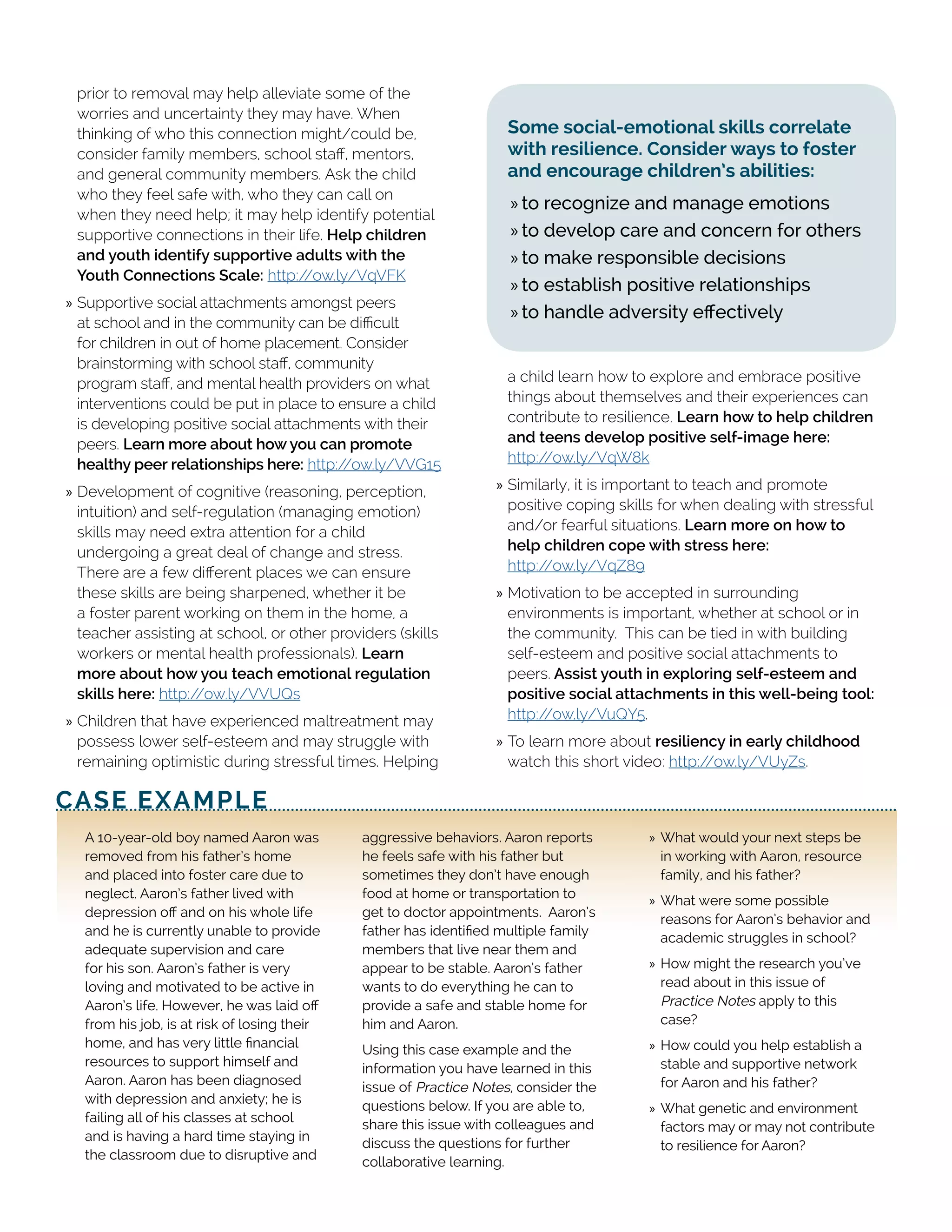The document discusses research on resilience in maltreated children. It explores how gene-environment interactions can help explain differences in outcomes for maltreated children. Specifically, it examines how variations in the gene that regulates serotonin levels interacted with experiences of maltreatment or healthy child-rearing. While maltreatment generally led to lower resilience, children with one genotype fared better than others depending on their environment. The research suggests genetics and environment combine to shape children's development in complex ways. Practitioners are encouraged to consider this research and apply it by fostering stable relationships and environments for children in their care.



